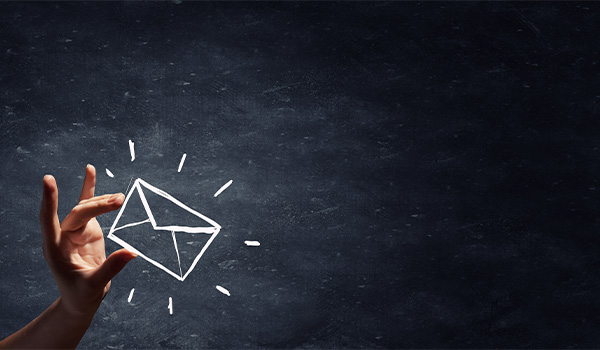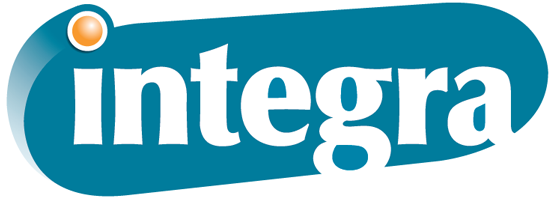Pros and Cons of Each Type of Direct Mail
March 31st, 2024 | 6 min read

If you’re planning a direct mail campaign and already know your options as far as what you can send to your clients and prospects, you may be wondering how these options compare to one another. What makes businesses choose one mailer over another? Why are postcards so popular, but you rarely see dimensional mailers?
At Integra, we’ve helped hundreds of customers with their direct mail campaign, with projects spanning across each of the six types of direct mail listed below:
- Postcards
- Letters (anything inside an envelope)
- Self-mailers
- Product catalogs
- Polybagged content
- Dimensional mailers (packages)
If you’ve read our article explaining each of the six forms of direct mail, you’ll have a solid grasp of what these products are. Now, we’re here to break down the pros and cons of each one so you and your team can decide which one sounds most like your ideal fit.
Direct Mail Solution #1: Benefits and Problems With Postcards
Postcard Benefits
- Cost-effectiveness: Postcards are among the most budget-friendly direct mail options. Their single-sheet format and the absence of an envelope reduce both printing and postage costs.
- High visibility: With no envelope to open, the message on a postcard is immediately visible to the recipient, increasing the chances of engagement.
- Versatility: Postcards can serve a wide range of purposes, from announcing new products or sales to serving as coupons or event reminders.
- Ease of tracking: By including a specific call to action, such as a QR code or unique URL, marketers can easily track the effectiveness of their postcard campaigns.
- Quick production: The simplicity of postcards allows for quicker design and printing times, making them ideal for time-sensitive promotions.
Postcard Drawbacks
- Limited space: The compact size of postcards restricts the amount of information you can include, which can be challenging for complex messages or campaigns requiring detailed explanation.
- Potential for damage: Postcards are more exposed than other mail pieces, which can lead to wear and tear during the mailing process, potentially diminishing their impact upon arrival.
- Overuse: Because postcards are a popular marketing tool, there's a risk your message might get lost among other postcards and mailers, especially during high-volume mailing periods like holidays.
Direct Mail Solution #2: Benefits and Problems With Enveloped Letters and Content
Benefits of Mail in Envelopes
- Personalization and privacy: Envelopes offer a layer of privacy for the content, making them ideal for sensitive or personalized information. This can enhance the recipient's perception of your brand as thoughtful and respectful of their privacy.
- Versatility: Whether you're sending a single letter, a multi-page document, or a combination of different materials, an envelope can accommodate various formats and sizes, providing flexibility in how you present your message.
- Enhanced open rates: A well-designed envelope, possibly with a clear call to action or intriguing message on the front, can increase the likelihood of your mail being opened. Personalized addresses, rather than generic titles, further encourage recipients to engage with the content.
Drawbacks of Mail in Envelopes
- Higher costs: The inclusion of envelopes adds to the overall cost of a direct mail campaign, not just in terms of materials but also in postage, especially if the weight of the mailer increases significantly.
- Added preparation time: Assembling materials into envelopes, especially for complex mailings with multiple inserts, requires more preparation time. This can delay the mailing process and requires careful planning to meet campaign deadlines. If you’re curious about how long your mail piece might take, check out our timeline calculator below for a personalized estimate.
- Risk of being overlooked: Despite the potential for increased open rates, there's also the risk that enveloped mail can be mistaken for generic or unsolicited mail, particularly if the envelope design does not stand out or engage the recipient immediately.
Direct Mail Solution #3: Benefits and Problems With Self-Mailers
Self-Mailer Benefits
- Cost-effectiveness: Self-mailers eliminate the need for an envelope, reducing material and postage costs. They are an economical choice for mass mailings.
- Engaging design potential: With the ability to incorporate vibrant graphics, photos, and varied typography across their entire surface, self-mailers can be highly attractive and engaging. The design freedom allows for creative expression that can make your message stand out in the mail.
- Eco-friendliness: By reducing the amount of material used in the mailing process, self-mailers can be a more environmentally friendly option compared to traditional enveloped mailings.
- Simplified preparation: The absence of an envelope simplifies the mailing process, from printing and assembly to mailing. This can lead to faster turnaround times and less labor involved in the preparation.
Self-Mailer Drawbacks
- Limited privacy: Self-mailers do not offer the same level of privacy as enveloped letters. Sensitive information is not as securely protected, which may not be suitable for all types of communication.
- Wear and tear: Since self-mailers are not protected by an envelope, they are more susceptible to damage during the mailing process. This can affect the presentation and readability of your message.
- Space constraints: While self-mailers provide a good amount of space for creative designs and information, they may not accommodate extensive content as comfortably as a multi-page letter or catalog can.
- Regulatory compliance challenges: Self-mailers must adhere to specific postal regulations regarding size, shape, and sealing methods. Non-compliance can lead to increased postage costs or delivery issues.
Direct Mail Solution #4: Benefits and Problems With Product Catalogs
Product Catalog Benefits
- Comprehensive coverage: Catalogs allow businesses to present their entire product line or a significant selection in one package, providing customers with a broad view of what's available.
- Engagement: The tactile experience of browsing through a catalog can engage customers more deeply than digital alternatives, potentially leading to higher conversion rates.
- Brand storytelling: Catalogs offer the space to include brand stories, testimonials, and other content that builds a deeper connection with the audience.
- Targeted distribution: Like other direct mail materials, catalogs can be sent to a specific demographic or geographic segment, ensuring they reach the most interested or likely buyers.
Product Catalog Drawbacks
- Cost: Producing and mailing catalogs can be expensive, especially for high-quality prints and large distributions. The costs include design, printing, and postage.
- Environmental concerns: The environmental impact of producing and disposing of large quantities of paper catalogs can be significant, which might concern eco-conscious brands and consumers.
- Update frequency: Unlike digital catalogs, updating print catalogs for new products or prices can be cumbersome, requiring a new print run and distribution cycle.
- Bulkiness: Depending on their size, catalogs can be bulky and require more postage than simpler direct mail pieces, increasing the overall cost of the campaign.
Direct Mail Solution #5: Benefits and Problems With Polybagged Collections
Benefits of Polybagged Mailers
- Versatility: Polybagging allows for a diverse range of materials to be sent together, providing recipients with a rich, multi-faceted brand experience.
- Protection: The polybag serves as a barrier against moisture, dirt, and damage during transit, ensuring materials arrive in pristine condition.
- Cost-Effective Bundling: Sending multiple items together can be more cost-effective than mailing them separately, saving on postage and handling.
- Increased Engagement: The curiosity sparked by receiving a collection of items can lead to increased engagement, as recipients spend time exploring each piece.
Drawbacks of Polybagged Mailers
- Environmental concerns: The use of plastic polybags raises environmental issues, as they are less eco-friendly than paper-based packaging and may not be recyclable in all areas.
- Perception of bulk mail: Some recipients may view polybagged collections as bulk or unsolicited mail, potentially reducing the perceived value of the contents.
- Cost of materials: While bundling can save on postage, the cost of producing multiple printed items for one mailing can add up, especially for high-quality prints.
- Preparation and assembly: Polybagged collections require additional steps for assembly and packaging, which can increase labor costs and preparation time.
Direct Mail Solution #6: Benefits and Problems With Dimensional Mailers
Benefits
- High engagement: The tactile and interactive nature of dimensional mailers significantly boosts engagement, encouraging recipients to spend more time with the material.
- Increased response rates: Their unique format can lead to higher response rates compared to traditional flat mail, as they capture attention and generate excitement.
- Memorable brand experience: Dimensional mailers offer a unique opportunity to create a memorable brand experience, leaving a lasting impression on recipients.
- Versatility in design: The format allows for creative freedom, enabling brands to tailor the mailer to specific marketing campaigns or messages.
Drawbacks
- Higher costs: Production, materials, and postage costs for dimensional mailers are typically higher than for flat mail due to their size, weight, and the complexity of design.
- Complexity in production: Designing and producing dimensional mailers can be more complex, requiring more time and potentially specialized vendors.
- Tricky postal regulations: There may be specific postal regulations and restrictions to consider, which can affect the design and delivery of dimensional mailers.
- Environmental impact: Depending on the materials used, dimensional mailers can have a greater environmental impact, particularly if they include non-recyclable components or excessive packaging.
Select and Print the Mailer for Your Direct Mail Marketing Success
You may be wondering, “Does direct mail still work in marketing?” We’re here to tell you from experience that the answer is a resounding yes — as long as the mail campaign is executed correctly. And one of the first steps to a successful direct mailing is choosing the appropriate materials for your specific budget, objective, timeline and audience.
The next step, arguably just as important as choosing your mailer, is sourcing a print and mail expert who knows the ins and outs of the industry and can guide you through the direct mail process as seamlessly as possible. The team at Integra Graphics Synergy would be delighted to take that part off your plate and handle the logistics of making your direct mail ideas into reality.
Ready to jump into your direct mail project with the perfect materials for your strategy? Reach out to our team to get started!
Topics:



